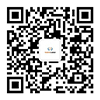The Philippines adopted an encouragement policy for export trade, adopted preferential policies for export -oriented enterprises in investment laws and relevant laws and regulations, and promulgated the Export Development Law in 1994.
(1) Export encouragement policy
Exporters enjoy various export encouragement policies, including simplifying export procedures and export surcharge tax exemption. Exporters can retain 100%export foreign exchange income and be free to use for any purpose. Exporters also enjoy low -cost facilities in imported goods, re -exports, foreign exchange assistance, and use of foreign exchange assistance and use of export processing zones. Export manufacturers can send ways or use tax refund plans to exempt the raw materials required for export products.
All Philippine exporters can receive export financing. Without the approval of the central bank, exporters can apply for credit certificates, buy contracts, or sell contracts required for foreign exchange loans required. The central bank uses the form of a guarantee commercial contract to stipulate that commercial banks loans to exporters with interest rates lower than national debt, and use labor -intensive export products to export -oriented enterprises to provide financial support.
The Philippines has also established an export processing area, a bonded warehouse and various types of industrial parks to encourage raw materials and tariffs.
(2) Export product management
The Philippines is inspiring exports. Except for certain commodities restricted by national interests and legal restrictions, most commodities are not restricted and freely exported. Export products are divided into three categories:
1. Free export products;
2. Restricted export products (such products may be approved by the competent department);
3. Forbidden export products (prohibit export products stipulated in law).
(3) Other regulations
1. Limit unfair competition, there are anti -dumping and anti -subsidy tax assessment.
2. Quota restrictions, mainly for textiles and clothing.
2. Import trade policy in the Philippines
(1) Imported product management
The Philippines allows all products to be imported in principle. The imported goods can be divided into three categories:
1. Free imported goods;
2. Restricted imported goods (requiring approval by the competent department in advance);
3. Forbidden imported goods (goods that damage public health, national security, international commitments, and local industrial development).
(2) Quota and licenses
1.At present, about 137 kinds of products are limited by the number, and 60 products are required to be absolutely limited.
2. Import license
Mainly agricultural products. There are more than 130 import licenses that need to be imported, accounting for about 4%of imported goods.
(3) Mandatory technical standards
1. Product requirements and technology
Producers or merchants exported to the Philippines shall follow the requirements of the Philippine importers, and the contract shall indicate the specifications of imported goods.
2. Environmental protection and pollution control
Importers must meet the requirements and regulations of environmental protection.
3. Food, health and safety regulations
(4) Tags and signs
1. General regulations
Imported products must have the following contents: registered trademark names, registered trademarks, registered companies names, producers or importers' addresses, the main ingredients and nets of products.
2. Special regulations
Some commodity subjective departments may have special regulations, such as: requiring other characteristics of the product.


